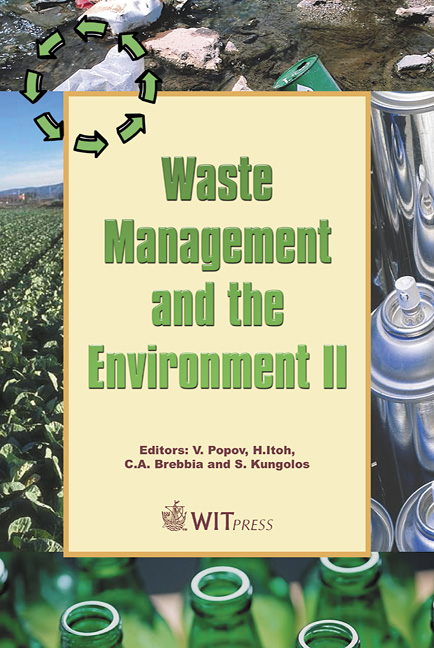Clean Technologies For Slaughterhouse Waste Treatment: The Case Of Puebla’s Municipal Slaughterhouse, Puebla, Mexico
Price
Free (open access)
Transaction
Volume
78
Pages
9
Published
2004
Size
229 kb
Paper DOI
10.2495/WM040651
Copyright
WIT Press
Author(s)
J. Abraham
Abstract
This research addresses the environmental problems caused by waste from the city slaughterhouse at Puebla, Puebla (Mexico), with an integral, multidimensional and systemic approach. On average, Puebla’s Municipal Slaughterhouse sacrifices 400 pigs, 175 heads of cattle, and 35 sheep and goats per day. From this sacrifice, approximately 5,000 liters of blood, 3.3 m3 of ruminal contents, 17,000 liters of effluents from entrails cleansing, and 0.3 m3 of hoofs and bristles are produced. Liquid waste are unloaded, without any treatment, directly at El Conde ravine. Solid waste are thrown to an exterior back zone of the slaughterhouse. This waste is exposed outdoors and there are human settlements nearby. Through the application of different treatment systems based upon clean and natural technologies such as sun drying, stabilization lagoon, and composting-worms, an integral processing of pollutant materials (waste) system is proposed to obtain organic fertilizers (byproducts). By means of the processes described in this research, 625 kg of bloodmeal, 550 kg of worm compost, 16 kg of hoofmeal, and 12,000 liters of liquid fertilizer are produced. These byproducts can be used with excellent results as organic fertilizers and to improve soil structure by increasing soil activity. Also, a financial study of feasibility was carried out to determine viability of the system, and survey results are indicated. However, the solution is not only technological or financial. A conceptual shift and perception change in Society-Nature relations are necessary as well as the participation of other sectors of the society. Keywords: conceptual change, pollutant materials, slaughterhouse waste products, byproducts.
Keywords
conceptual change, pollutant materials, slaughterhouse waste products, byproducts.





